Published on 4 Mar 2024
Why Is My Face Red? Possible Causes and Treatments
- ByMedical Content Team
- Medically Reviewed byDr. Sabine Kulhanek
Fact checked

Skin is an intriguing organ, serving as our body's outermost defense and often acting as a mirror, reflecting our internal health conditions. One such manifestation is facial redness, a common condition that many people experience. This post will touch on the possible reasons behind a red face, ranging from skin conditions and genetics to sun damage, hormonal imbalances, medications, stress, anxiety, and more.
Skin Conditions
1. Rosacea
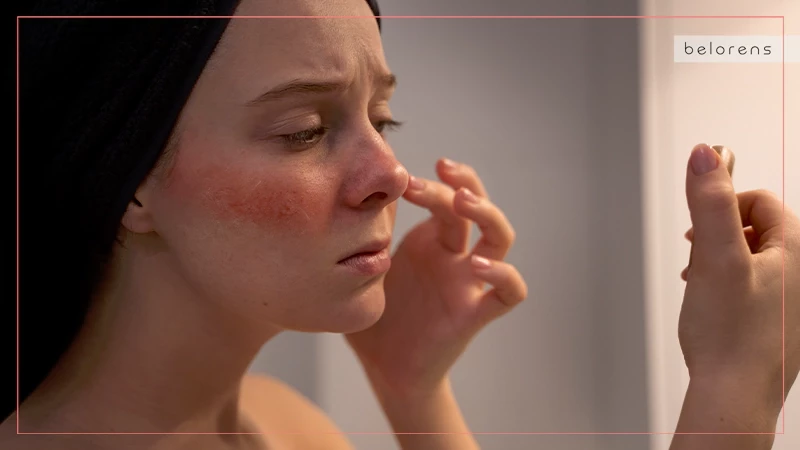
Rosacea is a chronic skin condition that causes persistent facial redness, visible blood vessels, and sometimes small, pus-filled bumps similar to acne.
The cause of rosacea is unknown, but it may be due to a combination of hereditary and environmental factors.
2. Seborrheic Dermatitis
Seborrheic dermatitis is another common skin condition causing redness. It results in flaky, dandruff-like scales and red skin, often in areas rich in oil glands like the forehead, sides of the nose, and behind the ears.
3. Eczema
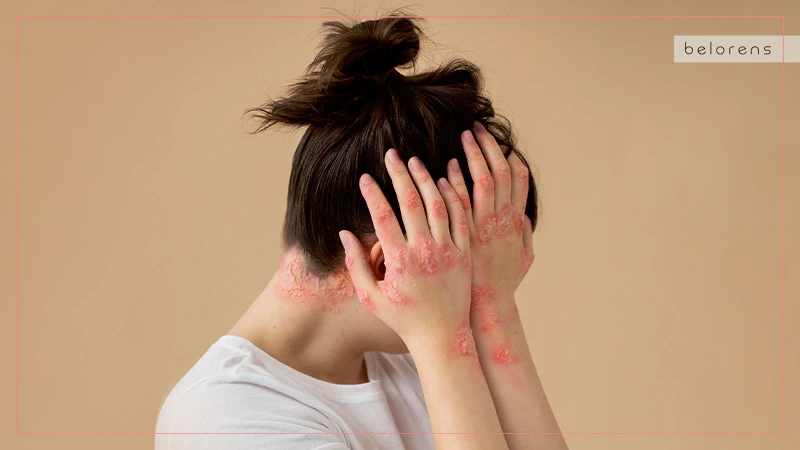
Eczema, or atopic dermatitis, is a condition that makes your skin red and itchy.
It's common in children but can occur at any age. Eczema is long-lasting and tends to flare up periodically.
Genetic Factors
Genetics plays a significant role in determining our skin's reaction to various factors, including its propensity to redden. Some individuals have a genetic predisposition to facial flushing and redness. For example, those with fair or light skin are more likely to experience facial redness due to the visibility of blood vessels under their skin.
Also Read: All You Need to Know About Skin Tone and Undertone
Sun Damage

Excessive exposure to the sun's harmful ultraviolet (UV) rays can cause significant damage to the skin, resulting in a sunburn. A sunburned face appears red, feels hot to the touch, and is often painful.
Prolonged UV exposure can also lead to other skin problems like premature aging and skin cancer.
Hormonal Imbalance
Hormonal imbalances can cause a host of skin issues, including facial redness. This is particularly true for women undergoing menopause, where hot flashes can cause the face to turn red. Similarly, conditions like Polycystic Ovary Syndrome (PCOS) can cause hormonal fluctuations, leading to skin problems including redness.
Carcinoid Syndrome
Carcinoid syndrome is a rare condition characterized by facial and chest flushing. Approximately 10 percent of individuals with a carcinoid tumor experience Carcinoid syndrome. These tumors are uncommon types of cancer that typically originate in the digestive tract but can spread to other organs such as the liver, pancreas, and lungs.
Carcinoid tumors produce hormone-like substances, including serotonin, which can contribute to the development of Carcinoid syndrome. Additional symptoms associated with these tumors and Carcinoid syndrome may include abdominal pain, diarrhea, and difficulty breathing.
Thyroid Cancer
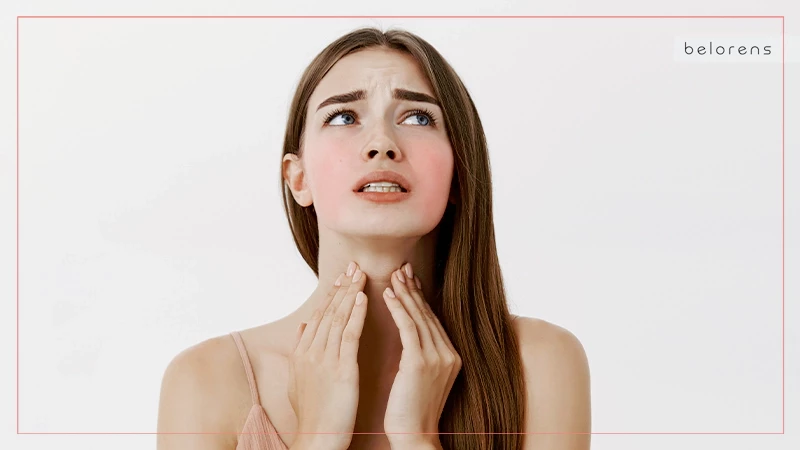
Thyroid cancer has the potential to alter thyroid gland function, affecting hormone production and potentially leading to flushing.
Among different types of thyroid cancer cases, medullary thyroid carcinoma is most commonly associated with flushing; however, it accounts for only approximately 4 percent of all thyroid cancers.
Mast Cell Activation Syndrome (MCAS):
Mast cell activation syndrome (MCAS) is a medical condition characterized by the manifestation of anaphylaxis-like symptoms, including hives, flushed skin, and respiratory difficulties.
Mast cells play a crucial role in the immune system, and MCAS arises when excessive release of substances within these cells occurs at inappropriate times.
In addition to hives and flushed skin, common symptoms of MCAS encompass itching sensations affecting the eyes, nose, mouth, and throat. Other indications may include low blood pressure and an accelerated heart rate.
Medications
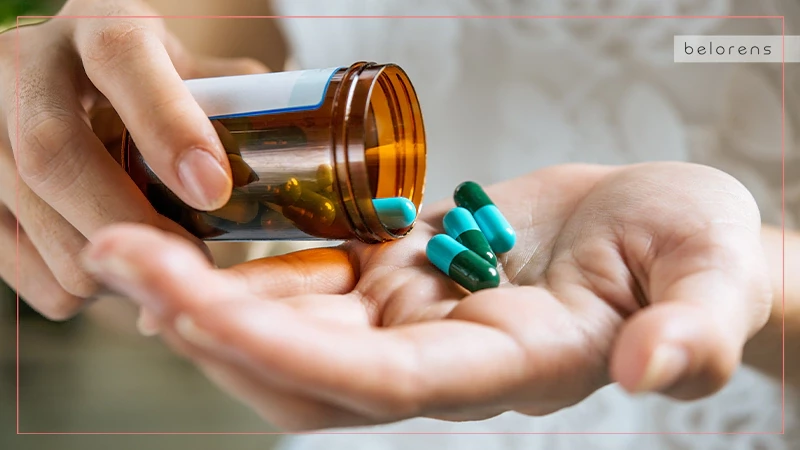
Certain medications can cause facial redness as a side effect, especially those that dilate blood vessels. These include high blood pressure drugs, migraine medications, topical treatments for rosacea, and some chemotherapy drugs. Always check with your healthcare provider if you notice any unusual skin changes after starting a new medication.
Some medications that may cause flushed skin in some people include:
- Calcium-channel blockers
- Some antibiotics
- Vasodilators
- nicotinic acid
- nitrates
- tamoxifen
- opioids, such as morphine
- thyroid-releasing hormone
Stress and Anxiety

Stress and anxiety can trigger a variety of physical responses, including facial flushing. This is due to the body's "fight or flight" response, which releases adrenaline.
This adrenaline rush causes blood vessels to widen and allow more blood to flow through them, leading to a red appearance of the face.
Other Causes
1. Alcohol
Alcohol can cause facial redness, as it dilates the blood vessels, increasing blood flow to the skin's surface. This effect is particularly noticeable in individuals who have a condition called alcohol flush reaction, or "Asian flush," which is more common in people of East Asian descent.
2. Allergies
Allergic reactions can also cause facial redness. Whether it's a reaction to food, dust, pollen, or pet dander, the body's response to an allergen often includes flushing and inflammation of the skin.
3. Exercise
Physical exertion from exercise raises the body's temperature, leading to increased blood flow to the skin's surface to help cool down the body, resulting in a flushed, red face.
4. Weather Conditions
Extreme weather conditions, whether it's freezing cold or scorching hot, can lead to facial redness. Cold winds can chap and burn the face, while intense heat can lead to flushed skin due to dilation of blood vessels.
5. Spicy Foods
Eating spicy foods can cause your face to turn red. This is because capsaicin, the compound that gives chili peppers their heat, can stimulate nerve endings in the skin, causing flushing and sweating.
How to treat facial skin redness?
Understanding the root cause of your red face is the first step towards effective treatment. If facial redness persists and causes discomfort, it's always a good idea to consult with a healthcare provider or dermatologist to rule out any underlying health conditions. Remember, your skin is the outward reflection of your inner health, so take good care of it!
While specific treatment options may depend on the underlying cause of the redness, here are some general strategies that can help alleviate and manage face redness:
- Identify and Address Triggers: Pay attention to factors that may trigger or worsen your facial redness, such as certain skincare products, exposure to extreme temperatures, spicy foods, alcohol consumption, or stress. Avoiding or minimizing exposure to these triggers can help reduce redness.
- Gentle Skincare Routine: Use mild and gentle cleansers specifically formulated for sensitive or irritated skin. Avoid abrasive scrubs and harsh chemicals that could further irritate the skin.

- Moisturize Regularly: Choose a moisturizer suitable for your skin type that helps hydrate and soothe the skin barrier. Look for ingredients like ceramides or hyaluronic acid which can provide hydration without causing irritation.
- Sun Protection: Protect your face from harmful UV rays by applying a broad-spectrum sunscreen with an SPF of 30 or higher daily before going outdoors. Opt for physical sunscreens containing zinc oxide or titanium dioxide as they tend to be less irritating than chemical sunscreens.
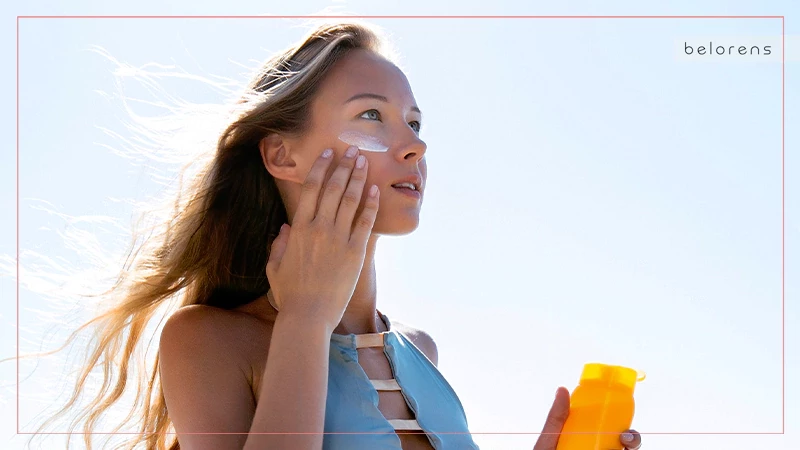
- Cooling Techniques: Applying cool compresses or using facial mists with soothing ingredients like aloe vera gel can provide temporary relief by reducing inflammation and calming the skin.
- Calming Ingredients: Look for topical creams or serums containing anti-inflammatory ingredients such as green tea extract, chamomile extract (azulene), niacinamide (vitamin B3), licorice root extract (glycyrrhizin), or colloidal oatmeal which have soothing properties known to reduce redness.

- Medical Consultation: If you experience persistent face redness accompanied by other symptoms like itching, burning sensations, swelling, pain, or if it significantly affects your daily life, it is advisable to consult a dermatologist. They can provide a proper diagnosis and recommend targeted treatments like prescription medications or topical creams tailored to your specific condition.
Remember that individual responses to treatments may vary, and it's essential to find an approach that works best for you based on the underlying cause of your face redness.




